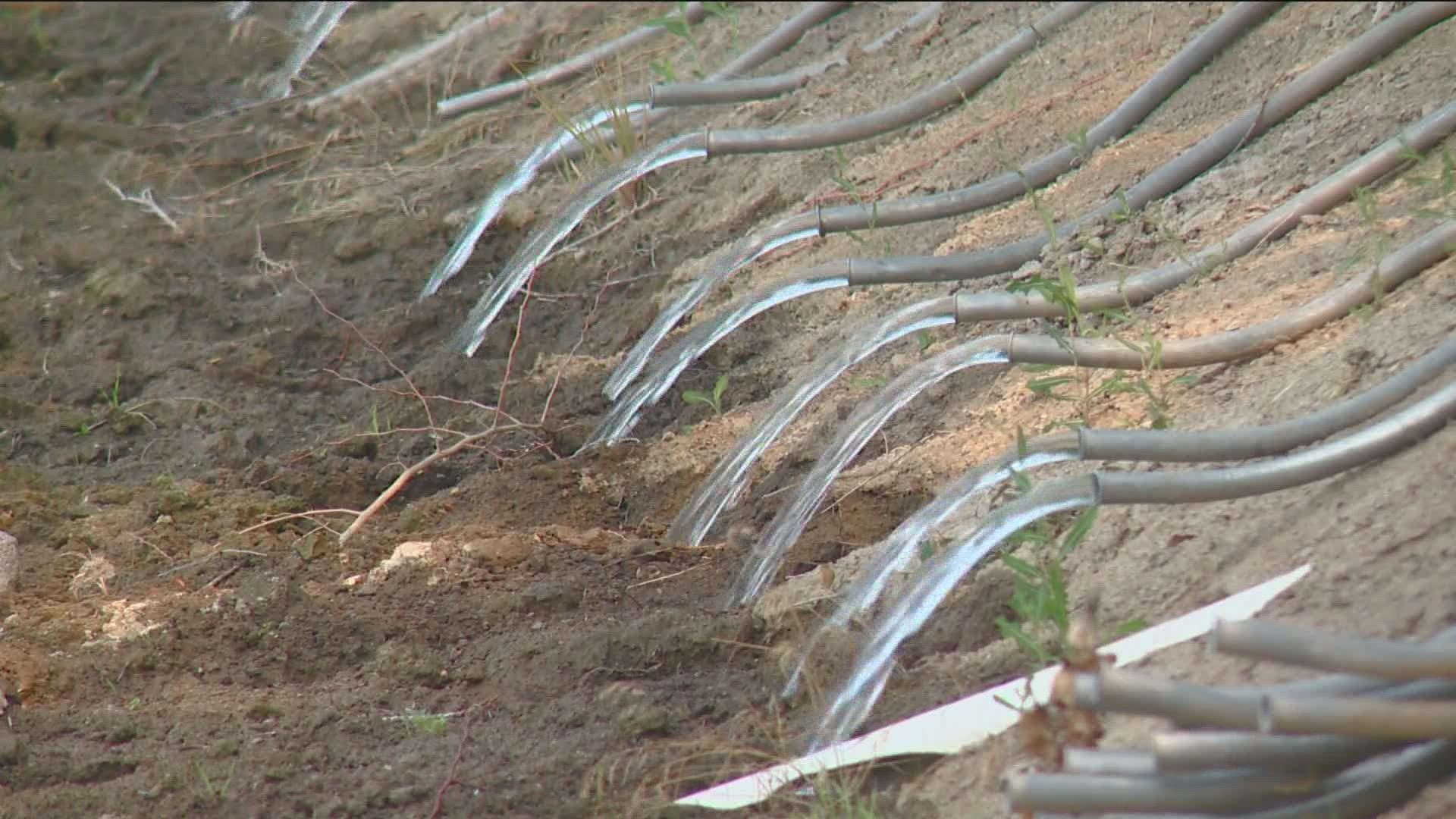BOISE, Idaho — The incredible growth in the Treasure Valley is having significant effects on an industry that Idaho and eastern Oregon were built on -- agriculture.
Tristan Winegar is the President of the Washington County Farm Bureau and a farmer and rancher in Weiser. His family has been ranching and farming awhile.
“I'm a fifth-generation farmer in Idaho. I'm a fourth-generation farmer in the Treasure Valley. And so, my family has seen it all," Winegar said. "The growth that we're seeing is unprecedented anywhere in the United States, it's crazy."
All that new growth is putting greater demand on, well, everything -- including our ground and surface water. That's because the Treasure Valley is a semi-arid desert climate that gets around 11 inches of rain a year. That's not nearly enough water to support Idaho agriculture, which this state's economy was built on and still relies on.
"All our economy is based on is agriculture,” says Winegar. “So, it's important that we recognize that first of all, and then second of all, we got to figure out what to do to help it."
The only ways to get water to crops are to either take it out of the rivers and canals (that's surface water) or use wells to pump the groundwater out from deep under our soil.
Winegar explains it like this: "So let's just say you have a cup, and there's a waiter that comes around and puts water in that cup. Well, let's say you start sharing that cup with other people. So, they're putting their straw in there. Well, the waiter still only comes around a certain amount of times to replenish that and if you're taking more water out with the straws, that cup can't keep up. And that's how groundwater works. We have an aquifer that we try and replenish and that's what farmers do. When we irrigate, that water goes in the soil, and it replenishes the aquifer keeps our water table up… And so, if we don't do that, that aquifer starts to dry up."
That's already happened in the Boise area, with shallow private wells drying up as farmland disappears.
"It's happened in states all around us, most notably California,” Winegar said. “And they have drilled their wells deeper and deeper and deeper chasing that groundwater. But they build more and more houses, and they're irrigating the ground less and less."
The U.S. Geological Survey said in 2015, Idaho was third in the nation for total water use and had the highest per capita domestic water use in the nation. Those are the latest numbers available, but they likely haven't changed much as our growth continues to strain our water resources in our desert climate. But what can we do about it?
"For my entire life, everyone has always complained about people moving here and moving in here and building houses and destroying this farm ground. But nobody has come up with a way to fix it. And so, one of the best ways to do that would probably be to protect our water," Winegar said.
While the Farm Bureau continues to work on protecting water with policy and legislation, we can all take part in water conservation. Winegar says that starts with education.
"I think it's everybody's responsibility to go out and learn and grow and do better, and learn how the water systems work here in Idaho and learn how you can work with us so that way we can all benefit from the water,” Winegar said. “It all comes back to water. That water is the most important thing in this state."
Meteorologist Jim Duthie says our snowpack, which will melt and turn into our surface water in the spring, is doing great for this time of year. Measurements from Dec. 13 show every basin in Idaho is above 100% of normal snow-water equivalent for this time of year.
But we've just started. And even if those trends continue and we have a great year for surface water, all that disappearing farmland means less surface water will be used for irrigation, and more of it will turn into groundwater.
Watch more 'Growing Idaho':
See the latest growth and development news in our YouTube playlist:

